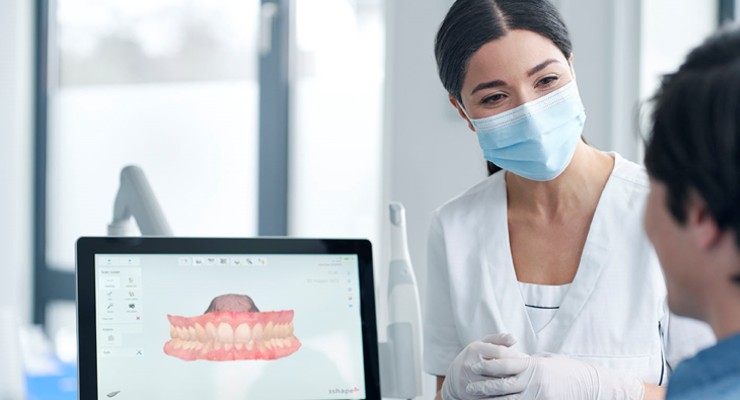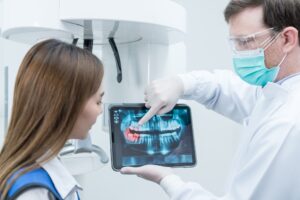3D printing (also known as additive manufacturing) is rapidly changing the way dentists deliver treatments, create therapies, and improve the patient experience. This revolutionary technology allows dentists and dental labs to create highly accurate dental models, crowns, bridges, dentures, aligners, surgical guides, and more. What once took days or even weeks can now be done in hours, saving time and money while improving accuracy and patient outcomes. As modern dentistry evolves, this technology will become an important tool in shaping its future.
From Traditional to Digital Methods
Prior to 3D printing, many dental devices were manufactured manually, requiring multiple processes such as physical stamping, casting, milling, and fitting. These traditional processes are labor-intensive, error-prone, and uncomfortable for patients. Dental practices are now moving to a fully automated approach, including 3D printing. Using computer-aided design (CAD) software, dentists can create customized solutions, print finished products with stunning precision, and digitally scan their patients’ mouths. For both patients and professionals, this change has resulted in a streamlined procedure and more consistent results.
Improving the Accuracy of Dental Models
Creating dental models is one of the oldest and most popular applications of 3D printing in dentistry. These models help examine patients’ mouths, design treatments, and fabricate devices. 3D printing creates these models using precise digital scanning, ensuring detail and accuracy that is difficult to achieve with traditional techniques. These high-resolution models reduce the chance of errors during surgery, allowing dentists to fine-tune treatment and identify problems.
A New Level of Personalization and Customization
3D printing allows for uniquely personalized dental care. Every patient’s oral situation is different. That’s why effective results depend on the ability to customize restorations and appliances to individual needs. From crowns to bridges to dentures, 3D printing ensures that each component fits the patient’s anatomy precisely. Personalized dental appliances are not only more comfortable and aesthetically pleasing, but they also extend their life and usability. Custom surgical guides can also be created to assist dentists in performing implant surgery, improving safety and accuracy.
Speed up the Treatment Process
Dental care is largely dependent on timing. Traditional techniques can require multiple visits and long wait times to fabricate and deliver a dental restoration. Thanks to 3D printing, many therapies can be completed in a single visit. Some dental practices now offer same-day crowns and other restorative treatments, reducing the time patients spend in the chair. This speed doesn’t come at the expense of quality; on the contrary, the precision and consistency of 3D-printed objects often surpass those created using traditional methods. A faster and more efficient dental experience is therefore beneficial for both patients and physicians.
Value for Dentists and Patients
3D printing is not only faster and more accurate; it is also more affordable in the long run. While the initial purchase of a 3D printer and its associated tools can be quite expensive, the ability to produce products in-house reduces the need to outsource to a dental laboratory. This reduces production costs and allows hospitals to provide reasonable services to patients. In the long run, significant savings on materials, labor, and transportation will be achieved, allowing more patients to receive high-quality dental care. Less waste and more efficient use of materials also contribute to better resource management.
Advancements in Biocompatible Materials
Modern 3D printing in dentistry uses a variety of advanced materials, many of which are specifically designed to be biocompatible and safe for use in the human mouth. These include resins, ceramics, and polymers that meet medical standards and perform well under the stresses of daily use. As material science continues to advance, new 3D printing materials are being developed that offer greater strength, flexibility, and aesthetic appeal. This ensures that dental appliances not only fit well and function properly but also look natural and last longer.
Enhancing Orthodontics with 3D Printing
Modern 3D printing in dentistry uses a variety of advanced materials, many of which are highly biocompatible and safe for use in the human mouth. They consist of medical-grade polymers, ceramics, and resins that can withstand the stresses of daily use. As materials science advances, new 3D printing materials are being developed that are stronger, more flexible, and more aesthetically pleasing. This ensures that dental appliances not only fit and function properly but also look natural and last longer.
Improving Orthodontics with 3D Printing
Another area of dentistry that has seen tremendous improvements thanks to 3D printing is orthodontics. Digital scanning and printing of molds now allows for the rapid and accurate production of clear aligners, retainers, and braces. This technology provides greater control over the treatment process and tooth mobility. While orthodontists are provided with tools that help them plan and monitor their treatments more effectively, patients are able to enjoy a more comfortable and less intrusive orthodontic experience. 3D printing technology can also be used to rapidly prototype new orthodontic devices and methods.
Assisting in Research and Education
Dental education and research are also being greatly influenced by 3D printing. Dental schools and research institutions are using printed models to instruct students, simulate surgeries, and create innovative treatments. These models allow students to master complex anatomy and practice procedures in a safe, hands-on environment. Researchers can test new dental products and build prototypes faster than ever before, ensuring that the next generation of dental professionals is better prepared and more skilled, fueling innovation.
Dental 3D Printing: The Future
Thanks to continued advances in technology, software, and materials, 3D printing in dentistry has a bright future. Innovations such as on-site manufacturing, multi-material printers, and AI-based design are expected to further revolutionize the industry. In the coming years, we will likely see 3D printing increasingly used in all areas of dentistry, including tissue engineering and regenerative dentistry. As technology becomes more affordable and accessible, dental treatments will become more efficient, personalized, and patient-friendly.
Conclusion
3D printing is transforming dentistry, making treatments faster, more accurate, and more targeted. This technology is changing everything from diagnosis and treatment planning to the actual production of dental equipment. As dentists become more efficient and precise, patients benefit from faster, more comfortable, and less expensive treatments. As dentistry evolves, 3D printing is expected to play an even greater role in the future, opening the door to new possibilities that were once thought unthinkable. The advent of this innovative tool has ushered in a new era in dental care, one where quality, convenience, and accuracy are paramount.
FAQs
1. How is 3D printing used in dentistry?
Dental 3D printing uses digital scanning and additive manufacturing technologies to create dental models, restorations, aligners, and other devices.
2. Is 3D printing safe for dentistry?
3D printing meets medical standards for dental treatments by using biocompatible materials that are safe for the oral cavity.
3. Can we make crowns the same day with 3D printing?
Some dental practices are even using 3D printers to make crowns in one visit, eliminating the need for multiple visits.
4. Is 3D printing more expensive for dentistry?
Although the initial device is expensive, 3D printing in dentistry can often reduce overall costs by eliminating lab costs and reducing production time.
5. Is 3D printing replacing traditional dental technology?
Given its accuracy, speed, and customization capabilities, 3D printing is likely to complement and, in many cases, replace traditional methods; however, depending on the circumstances, certain conventional procedures may still be applied.




